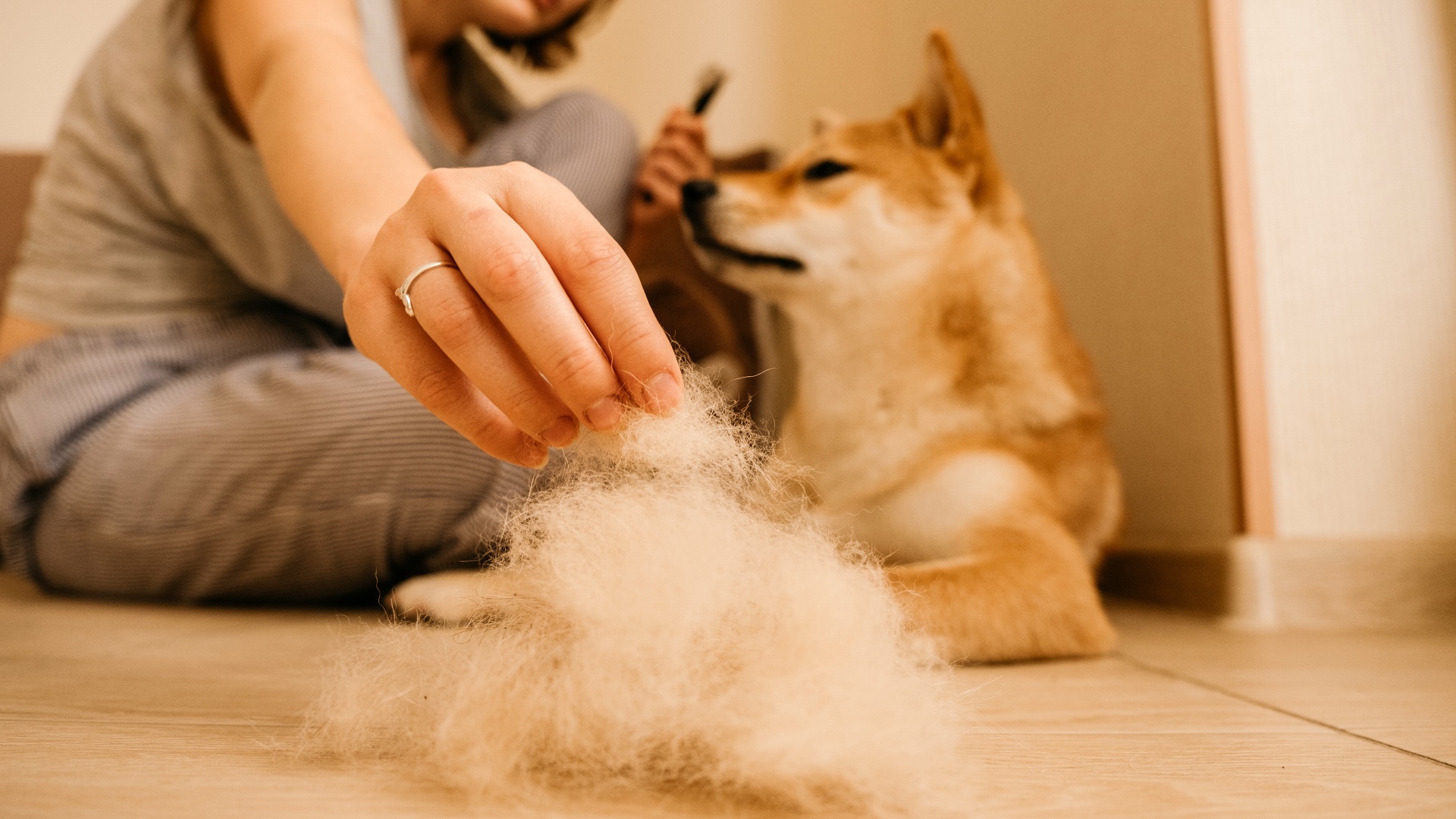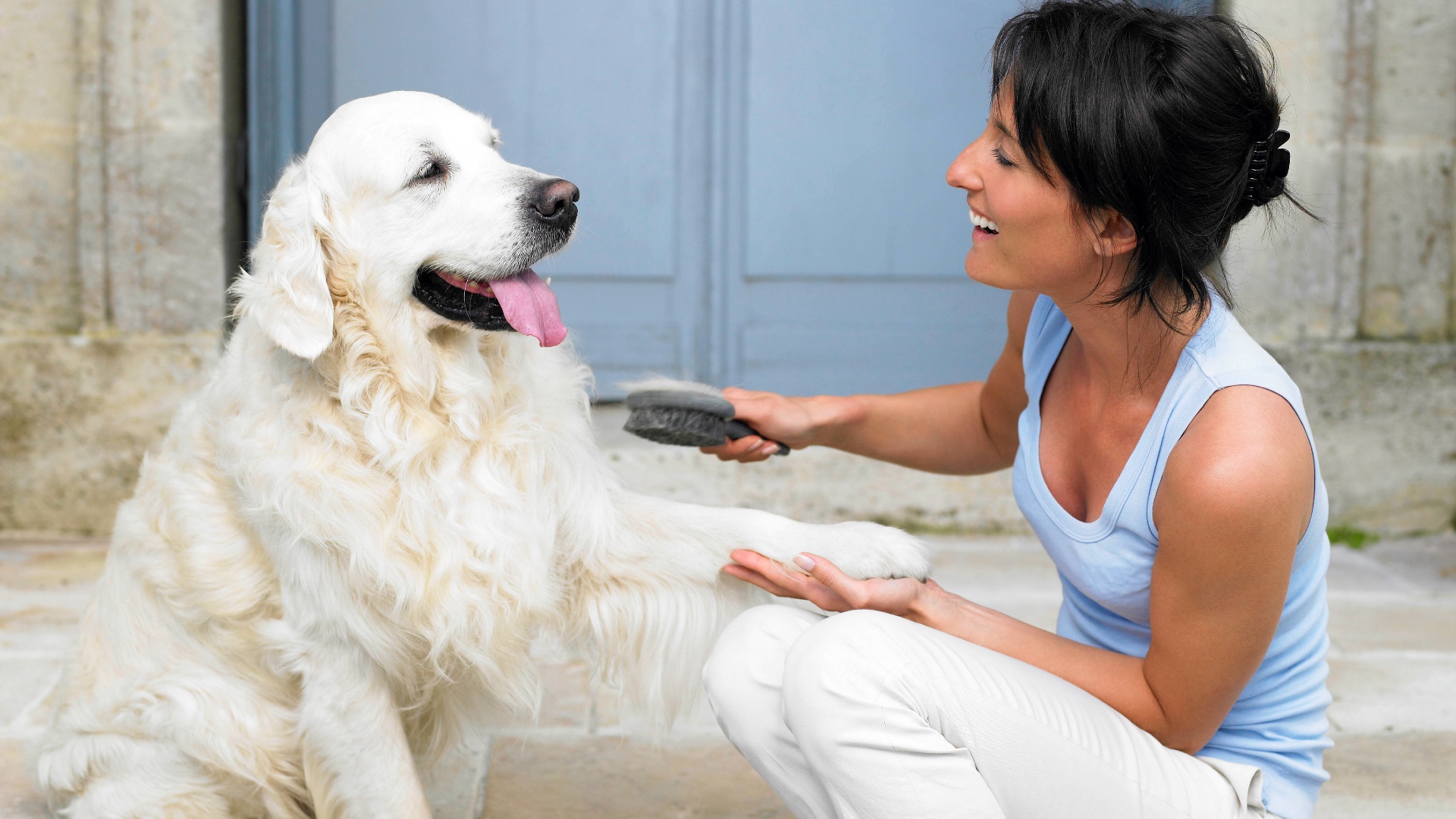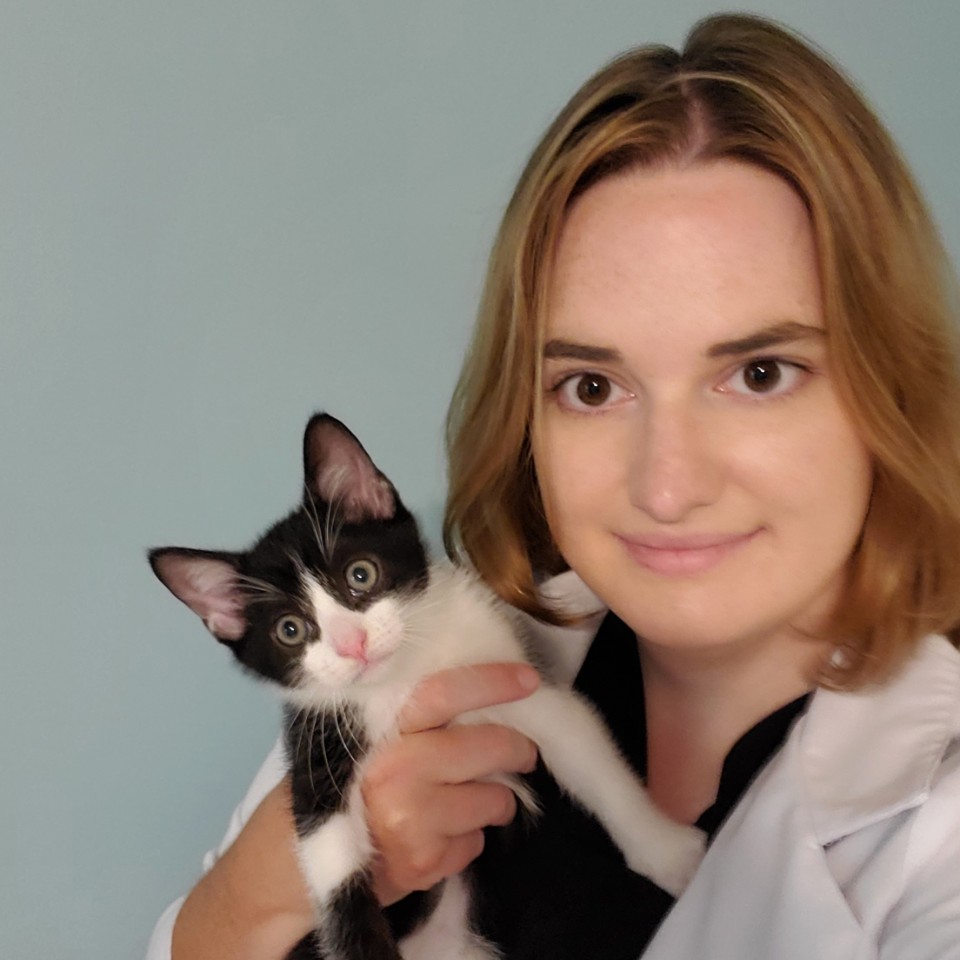Dog shedding: What causes it and how to manage it
Dealing with dog shedding is an unavoidable part of being a pet parent, but with our top tips, you'll be able to curb the amount of fur you find on your floor!

If you have dogs, no doubt you’ve dealt with your fair share of your dog shedding hair – around the house, in the upholstery, and everywhere your dog passes by! Shedding is one of the many challenges that will come along with pet ownership, but there are some steps you can take to manage and even reduce the amount of dog hair floating around your home. To address your dog’s shedding, you’ll first need to determine whether the volume of hair your dog sheds is normal. Then check out our tips to see how you can decrease the amount of hair your dog sheds, and what you can do to clean up the hair left behind in your home.
Why do dogs shed?
Dog hair is more than just a nuisance. A dog’s hair acts as a protective barrier for the skin, helps regulate your dog’s body temperature, and protects your dog from the elements. As individual hairs complete their growth cycles, they naturally break away to make room for new, healthy hair to grow in. This is a normal process that results in some constant shedding the same way you may find loose hairs left behind after you shower or brush your own hair. The amount of shedding that is normal for your dog will vary depending on your dog’s breed, coat type, and environment.
Why is my dog shedding so much?
Several factors can cause your dog to shed more than usual. Sometimes an increase in shedding can be normal, such as when the seasons change or when a female dog “blows her coat” after a heat cycle or giving birth. Dogs will also shed more during stressful situations, like a trip to the veterinary clinic.
Sometimes excessive shedding can have underlying causes that are more concerning. These can include conditions such as:
- Parasites
- Allergies
- Skin infections
- Autoimmune conditions
- Endocrine (hormonal) disorders
- Contact dermatitis (allergic reactions)
These conditions are often accompanied by other symptoms, such as redness of the skin, itching, crusting, scabbing or changes in your pet’s appetite and energy level. If you notice any changes in your dog’s health or behavior, it’s best to see your veterinarian for an evaluation. Your vet will perform a full physical examination and may recommend some additional diagnostic testing to help determine the underlying cause of your dog’s excessive hair loss.
How to stop a dog from shedding

While you can’t stop shedding completely, there are some steps you can take to help manage your dog’s shedding and reduce the amount of dog hair left around your home. First, make sure to bathe and brush your dog regularly to remove loose hairs and prevent tangles and matting. For long-haired dogs, daily brushing with one of the best dog brushes may be necessary to maintain the coat and manage shedding.
Regular brushing sessions are also a great time to bond with your dog and practice some basic training. To help make grooming sessions easier, start slow and use plenty of positive reinforcement, such as treats and praise, to make the experience more pleasant for your dog. Never force your dog to submit to grooming, and stop if your dog seems stressed or anxious at any point during the process.
Get the best advice, tips and top tech for your beloved Pets
In addition to regular grooming, you can also curb your dog’s shedding by feeding them a high-quality diet to promote a healthy hair coat. Your dog’s diet should be age-appropriate, complete and balanced. Ask your vet for recommendations or learn which dog food is best for your dog. Remember that if you do decide to change your dog’s diet, you should transition to the new diet gradually to avoid upsetting your dog’s stomach – a stressful event that could lead to even more shedding!
Make sure you also keep your dog up to date on regular veterinary care and parasite prevention medications to reduce the risk of shedding due to medical conditions. Routine veterinary visits can often catch and address potential problems early before they turn into major issues. Your vet can also help you determine whether your dog’s current level of shedding is normal, or whether there is cause for concern.
Although it may be tempting to try home remedies and supplements that claim to stop shedding, these products rarely work and some may not be safe for your dog. As always, be sure to consult your vet before starting any new vitamins, supplements, or home remedies for your dog.
Dogs that don’t shed: A mythical creature
Despite their popularity, it’s a myth that breeds like the Poodle or the Bichon Frise don’t shed. Sadly, if it has hair, it’s going to shed! The good news is that these breeds do tend to shed significantly less than their thicker-coated counterparts. If you’re looking for a dog with a little less cleanup, these low-shedding breeds may be a viable option. However, it’s important to remember that these breeds still shed some hair as part of the normal cycle of hair growth – you just won’t see as much as you would with other breeds.
How to get rid of dog hair around the home
Unfortunately, sometimes the only way to manage shedding is to just deal with it! Investing in a good vacuum cleaner for pet hair is the best option for dealing with all that fur. Using machine-washable slipcovers, throws, or protective mats is a great way to keep upholstery looking fresh and new all year round. Lint rollers are also a must-have to quickly pick up dog hair from clothing and upholstery. And whenever possible, choose fabrics and surfaces that are more resistant to pet hair, such as swapping your fabric couch for a leather one or sticking with hardwood floors instead of wool carpeting for easy cleaning.
Dog shedding: A normal nuisance
Shedding is a normal part of every dog and dog owner’s life. Knowing what’s normal for your dog is important so you can identify changes early and see your veterinarian if shedding starts to become excessive or abnormal. With regular grooming, a healthy diet, and routine veterinary care, you can minimize your dog’s shedding as much as possible.
Dr. Elizabeth Racine is a small animal general practice vet covering all things pet health and wellness. Her special interests include veterinary behavior, nutrition, and internal medicine.
As a freelance writer, Dr. Racine has written content for major companies in the industry such as the American Kennel Club, Merck Animal Health, Bayer PetBasics, Elanco, and CareCredit. In her free time, Dr. Racine enjoys playing trampoline dodgeball, hiking with her beagle Dasher, and spending time with her three mischievous cats.

